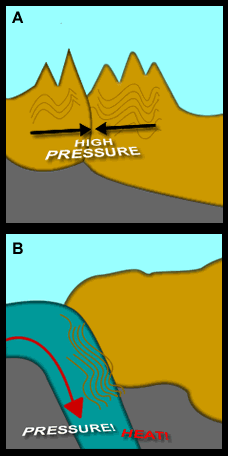When continents collide (A) or ocean crust subducts (B), rocks are altered by regional metamorphism.
L.Gardiner/Windows Original
Regional Metamorphism
Sometimes rocks are metamorphosed over large areas that are the size of many states or even several countries. This is called regional metamorphism.
How could this happen? What force has the power to squish all those rocks until the crystals change? The answer is MOVING ROCKS! Usually regional metamorphism happens as the rocky surface of the Earth moves by plate tectonics! Whenever the pieces of the Earth's surface smash into each other, metamorphic rocks form deep within the Earth.
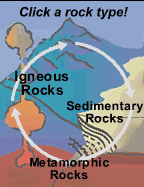
Last modified June 20, 2003 by Lisa Gardiner.
You might also be interested in:
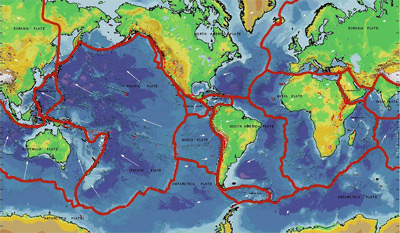
Many forces change the surface of the Earth over time. The largest force that changes our planet's surface is movement of Earth's outer layer in a process called plate tectonics. As shown in this picture,
...more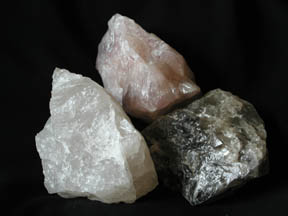
Spotting minerals is fun! There are many different types of minerals. Each has a different name and special traits. You can learn more about minerals by looking closely at them to understand their special
...more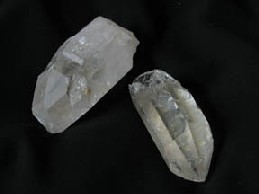
This mineral is called quartz! Sometimes it looks white like milk but usually it looks clear like glass, sometimes with a little pink or gray tinge of color. You can find crystals of quartz in many different
...more
Mica minerals make some rocks sparkle! Look for them in your igneous and metamorphic rocks. Do they make your rocks sparkle? They break into flat plates because they have cleavage.
...more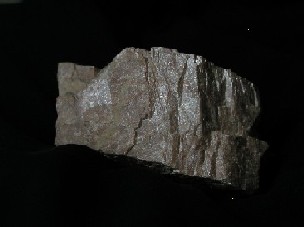
This is a feldspar mineral! Look for it in igneous rocks where it looks like white or pink crystals. You might find it in other types of rocks as well.
...more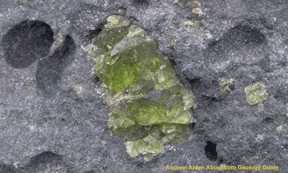
The mineral that is green is called olivine! Look for it in igneous and metamorphic rocks. In this picture, olivine is filling a hole in the igneous rock.
...more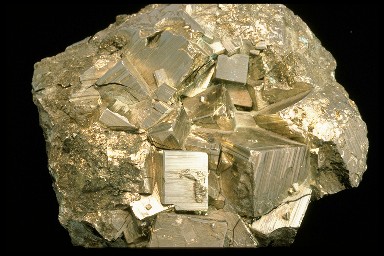
There are at least 2000 minerals on Earth. That's a lot of minerals! But you don't need to know all of them to spot the minerals lurking in the rocks of your backyard. That is because only a small number
...more
